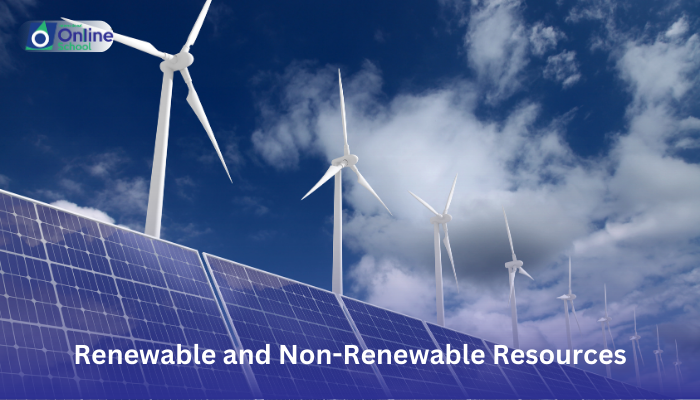
Learning Outcomes:
i. Define and differentiate between renewable and non-renewable resources.
ii. Identify examples of common renewable and non-renewable resources found in our environment.
iii. Analyze the advantages and disadvantages of relying on each type of resource.
iv. Appreciate the importance of sustainable resource use and promote responsible practices.
Introduction:
Imagine a vast treasure chest overflowing with gifts from nature. Some treasures, like sunlight and wind, are forever replenished, like a magic well that never runs dry. Others, like fossil fuels and minerals, are finite, like precious gems, once consumed, gone forever. Today, we embark on a fascinating journey to explore these treasures, differentiating between renewable and non-renewable resources and understanding how these gifts from nature fuel our lives and shape our future.
i. The Two Sides of the Coin: Defining Renewable and Non-Renewable Resources:
Renewable resources: These are treasures that nature continuously replenishes. Think of them as gifts that keep on giving, like sunlight that streams down every day, or the wind that whispers through the leaves. Examples include solar energy, wind power, water (rivers, tides, waves), geothermal energy, and biomass (plants and animal waste).
Non-renewable resources: These are treasures with a limited supply. Once depleted, they cannot be easily replenished. Think of them as hidden gems, buried deep within the Earth, like fossil fuels (coal, oil, natural gas) and minerals (gold, diamonds, copper).
ii. A Treasure Trove of Examples: Identifying Resources in Our World:
Renewable: Sunlight illuminates our homes, wind turbines spin in fields, and rushing rivers generate electricity. Trees provide timber and fruits, while waves crashing against the shore offer energy.
Non-renewable: Cars run on gasoline, buildings rise from steel and concrete, and our gadgets rely on precious metals like lithium. Fossil fuels power industries and heat our homes, while minerals like diamonds adorn our fingers.
iii. The Weighing Scales: Advantages and Disadvantages:
Renewable: They are environmentally friendly, producing little to no pollution. They are also sustainable, offering long-term solutions for energy and resource needs. However, their availability can be variable depending on weather conditions and location.
Non-renewable: They offer convenient and concentrated forms of energy, and their availability is often reliable and consistent. However, they are finite and their use contributes to pollution and environmental damage.
iv. A Call for Stewardship: Sustainable Resource Use and Responsibility:
Understanding the limitations of non-renewable resources and the potential of renewables is crucial. We must:
Conserve and use resources efficiently: Turn off lights when leaving a room, choose energy-efficient appliances, and adopt sustainable practices in daily life.
Invest in renewable energy: Support the development and use of solar, wind, geothermal, and other renewable energy sources.
Promote responsible waste management: Recycle, reuse, and reduce waste to minimize the need for extracting new resources.
Nature's treasure chest holds both renewable and non-renewable resources, each with its own advantages and limitations. Recognizing this distinction empowers us to make informed choices, embrace sustainable practices, and ensure that future generations inherit a planet rich in resources and glowing with the promise of a brighter tomorrow. By cherishing the gifts we have, using them wisely, and investing in renewable solutions, we can become guardians of nature's bounty, ensuring that the treasures of our planet continue to light our way for generations to come.